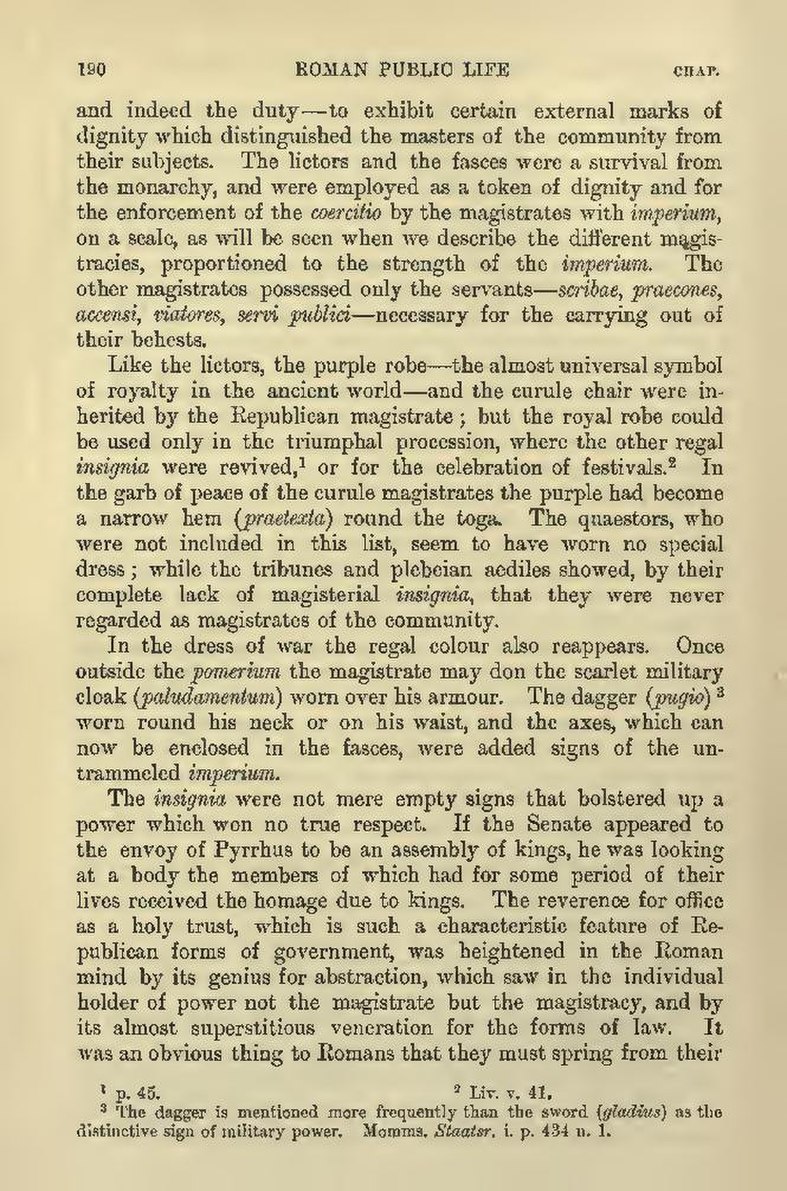- and indeed the duty—to exhibit certain external marks of
dignity which distinguished the masters of the community from their subjects. The lictors and the fasces were a survival from the monarchy, and were employed as a token of dignity and for the enforcement of the coercitio by the magistrates with imperium, on a scale, as will be seen when we describe the different magistracies, proportioned to the strength of the imperium. The other magistrates possessed only the servants—scribae, praecones, accensi, viatores, servi publici—necessary for the carrying out of their behests.
Like the lictors, the purple robe—the almost universal symbol of royalty in the ancient world—and the curule chair were inherited by the Republican magistrate; but the royal robe could be used only in the triumphal procession, where the other regal insignia were revived,[1] or for the celebration of festivals.[2] In the garb of peace of the curule magistrates the purple had become a narrow hem (praetexta) round the toga. The quaestors, who were not included in this list, seem to have worn no special dress; while the tribunes and plebeian aediles showed, by their complete lack of magisterial insignia, that they were never regarded as magistrates of the community.
In the dress of war the regal colour also reappears. Once outside the pomerium the magistrate may don the scarlet military cloak (paludamentum) worn over his armour. The dagger (pugio)[3] worn round his neck or on his waist, and the axes, which can now be enclosed in the fasces, were added signs of the untrammeled imperium.
The insignia were not mere empty signs that bolstered up a power which won no true respect. If the Senate appeared to the envoy of Pyrrhus to be an assembly of kings, he was looking at a body the members of which had for some period of their lives received the homage due to kings. The reverence for office as a holy trust, which is such a characteristic feature of Republican forms of government, was heightened in the Roman mind by its genius for abstraction, which saw in the individual holder of power not the magistrate but the magistracy, and by its almost superstitious veneration for the forms of law. It was an obvious thing to Romans that they must spring from their
